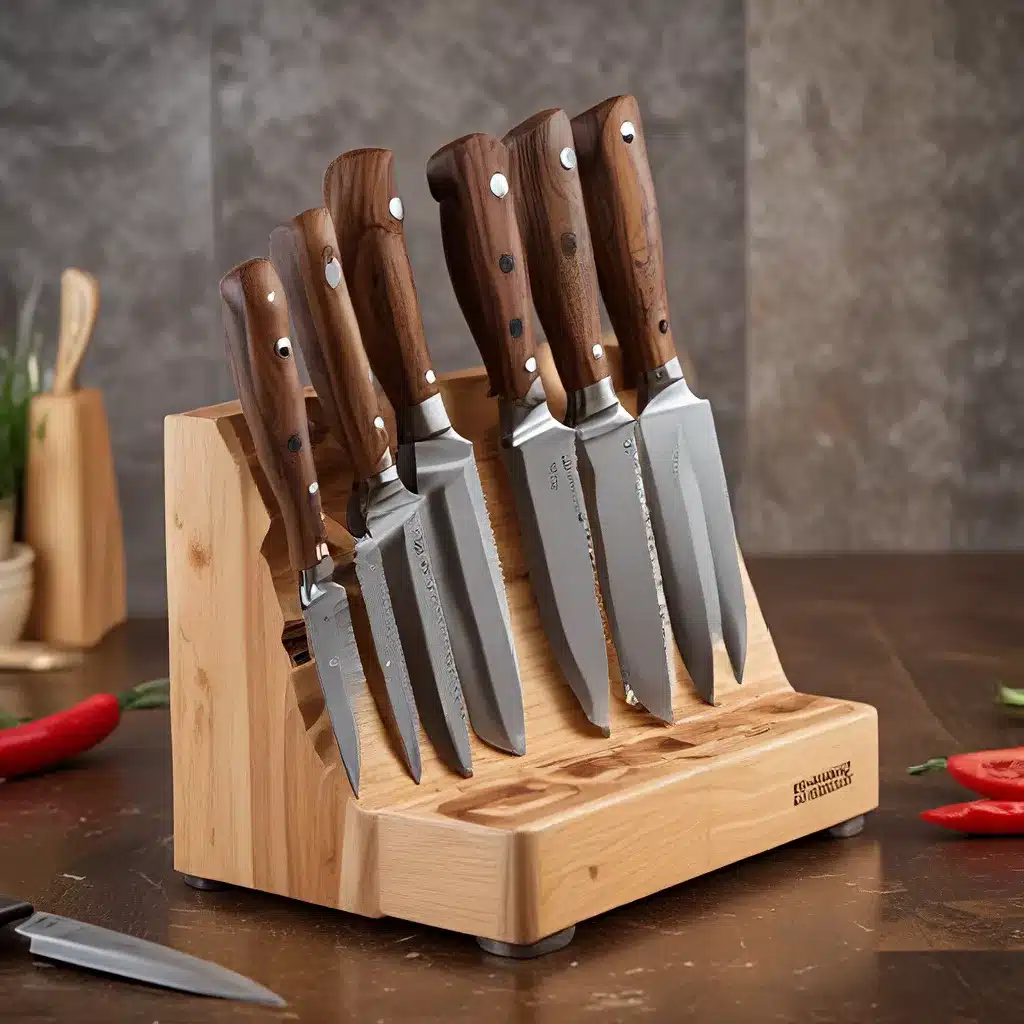
As a self-proclaimed kitchen junkie, I’ve amassed quite the collection of knives over the years. From my trusty Santoku to an array of paring, bread, and chef’s knives, I’ve learned that the right tool for the job can make all the difference in the world. And believe me, I’ve had my fair share of tomato squishing and onion-induced tears from using the wrong knife!
You see, when it comes to cooking, the knife is undoubtedly the most important tool in your arsenal. But with so many options out there, it can be downright overwhelming to figure out which blade is best for tackling every task in the kitchen. Fear not, my culinary comrades! Today, I’m here to share my hard-earned wisdom on navigating the knife block and choosing the right blade for every situation.
Mastering the Basics: Understanding Knife Anatomy and Functions
Let’s start with the fundamentals. Not all knives are created equal, and each one has its own unique purpose and strengths. Familiarizing yourself with the different types of knives and their intended uses is the first step to becoming a knife ninja in the kitchen.
The paring knife, for instance, is a versatile little fella with a blade typically ranging from 2-4 inches. It’s perfect for those delicate tasks, like peeling garlic, trimming mushrooms, or slicing small fruits like strawberries. On the other hand, the chef’s knife, with its 8-14 inch blade, is the quintessential all-purpose workhorse. It’s great for chopping, dicing, and slicing a wide variety of ingredients, from vegetables to meats and fish.
But wait, there’s more! The serrated knife, with its wavy blade, is ideal for slicing through tender interiors and firm exteriors, making it a dream for cutting tomatoes, melons, and even delicate desserts. And let’s not forget the Japanese-designed Nakiri knife, which is a multitasking marvel for slicing, dicing, and mincing vegetables.
Now, I know what you’re thinking: “But Aimée, how do I know which knife to use for which task?” Never fear, my kitchen-savvy friends, I’ve got you covered.
Pairing Knives with Tasks: A Recipe for Success
Imagine you’re tackling a hearty roast beef. Would you really want to use your trusty paring knife to carve that bad boy? Absolutely not! That’s where the carving knife with its long, slender blade comes in handy, allowing you to make precise, clean cuts through the meat.
On the other hand, if you’re whipping up a batch of flaky pastries or delicate desserts, you’ll want to reach for that serrated knife to slice through the tender layers without crushing the delicate interior.
And let’s not forget about those onions – the bane of every home cook’s existence. Instead of reaching for the nearest knife and ending up with a tear-inducing mess, grab your chef’s knife and put those knife skills to the test. With a sharp blade and a bit of practice, you can tackle those onions with precision and ease.
The key is to match the knife to the task, and trust me, it makes all the difference in the world. Think of it like choosing the right tool for the job – you wouldn’t use a rake to transplant delicate seedlings, would you?
Unlocking the Secrets of Knife Maintenance
Now, I know what you’re thinking: “But Aimée, how do I keep my knives in tip-top shape?” Well, my friends, I’m about to let you in on the ultimate knife-care secrets.
First and foremost, keep those blades sharp. A dull knife is not only frustrating to use, but it can also be downright dangerous. Invest in a quality sharpening stone or electric sharpener and make it a habit to hone your knives regularly. Trust me, the difference a sharp blade makes is nothing short of life-changing.
And what about storage? While knife blocks and magnetic strips are popular options, they can actually damage your blades over time. Instead, consider individual knife covers or in-drawer storage solutions to keep your knives safe and secure.
But perhaps the most important tip of all? Treat your knives with the respect they deserve. Avoid the ultimate no-no of storing them loose and uncovered in a drawer, and never, ever use them for tasks they weren’t designed for (I’m looking at you, paint can openers).
Embracing the Knife-y Life: A Journey of Discovery
As I’ve discovered over the years, navigating the knife block is a never-ending journey of exploration and discovery. There’s always something new to learn, whether it’s mastering the art of fish filleting or perfecting the julienne cut.
And you know what? I wouldn’t have it any other way. Cooking has always been my creative outlet and source of relaxation, and the knives in my kitchen are the tools that unleash my culinary superpowers.
So, my fellow kitchen enthusiasts, I encourage you to embrace the knife-y life. Experiment, practice your skills, and never be afraid to try something new. Who knows, you might just discover your inner knife ninja in the process.
And remember, when it comes to choosing the right knife for the job, the Herman Knives website is always here to lend a helping hand. Happy cooking, my friends!


